Progress links digest, 2023-10-12: Dyson sphere thermodynamics and a cure for cavities
post by jasoncrawford · 2023-10-13T00:41:40.024Z · LW · GW · 1 commentsThis is a link post for https://rootsofprogress.org/links-digest-2023-10-12
Contents
From the Roots of Progress fellows On the Progress Forum Events Prizes Opportunities Announcements Karkió and Weissman win the Nobel for mRNA RIP News AI Queries Books Podcasts Papers Links Social media Quotes Aesthetics Charts None 1 comment
I’ve been traveling for a while, so this is a long one, covering the last ~month. I tried to cut it down, but there have been so many amazing announcements, opportunities, etc.! Feel free to skim and jump around:
From the Roots of Progress fellows
- Connor O’Brien and Adam Ozimek have a new proposal, the Chipmaker’s Visa, “to ensure the fabs we’re spinning up have the specialized talent they need immediately” (via @cojobrien)
- In Defence of a High-Energy Future (via @mboudry)
- Anna-Sofia Lesiv on desalination (via @annasofialesiv)
- Does the Vegas Sphere Mark the End of Monument Stagnation?
On the Progress Forum
- “The Knowledge Machine delves deep into the interplay between systems thinking and human nature, starting with a thought-provoking idea: most people lack the inherent drive to pursue knowledge.” Science Despite the Fragility of Scientists
- “There exists a fundamental mismatch in scale that means no one really represents the interests of the overall Bay Area, nor has the power to govern it coherently. This is causing a fundamental breakdown.” It’s Time for Greater San Francisco
Events
- DC, Oct 16: Anticipating the Future with Virginia Postrel and Jim Pethokoukis
- San Francisco, Dec 1–3: I’ll be at the Foresight Institute’s Vision Weekend USA, speaking on an “Existential Hope” panel
Prizes
- A $10,000 challenge for writings of a positive future made with biology. Deadline extended to Oct 15 (via @NikoMcCarty, @HomeworldBio)
- For science journalists: The Good Science Project is joining with Johns Hopkins to sponsor a set of awards for reporting on science policy issues (via @stuartbuck1)
- The Progress Prize. “The best blog gets £5,000 plus other goodies” (via @Tom_Westgarth15)
- “Will give £100 to anyone who can come up with a catchy alternative term for ‘the British Industrial Revolution’ that I can use without cringing” (@antonhowes)
Opportunities
- “Are you a people-wrangling project manager who wants to bring more awesome science and technology into the world? Then check out our new short term job posting here” (via @Spec__Tech)
- Ideas Matter: An 8-week writing fellowship for biology (via @NikoMcCarty)
- “We’re looking for someone to help us at @fiftyyears with a research project on the history of technological progress, its future, and the potential contribution to a thriving future” (via @sethbannon)
- “I’m working on charting technological progress in different mediums (electrons, atoms, bits, …) over time. Know anyone who might want to work with me on a short term (1-2 weeks) data gathering and analytics project?” (@fuelfive)
- Microsoft is hiring a “principal program manager of of nuclear technologies” to implement a small and micro reactor strategy (via @Atomicrod)
- “I’m helping to find UK based young people who are interested in being involved in applied metascience for an event” (@AnEmergentI)
Announcements
- NSF partners with the Institute for Progress to test new mechanisms for funding research and innovation, reports (@AlecStapp)
- Helion is building a 500 MW fusion power plant at Nucor steelmaking facility (via @dekirtley)
- Laura Deming launches a new longevity fund (via @LauraDeming)
- ARIA announces their first set of Programme Directors (via @ilangur). One of them is @davidad, who will be working on “accelerating mathematical modelling of real-world phenomena using AI”
- Neuralink is recruiting for their first-in-human clinical trial, for those with quadriplegia due to cervical spinal cord injury or amyotrophic lateral sclerosis (ALS) (via @neuralink)
Karkió and Weissman win the Nobel for mRNA
- In case you missed it, “The 2023 Nobel Prize in Physiology or Medicine has been awarded to Katalin Karikó and Drew Weissman for their discoveries concerning nucleoside base modifications that enabled the development of effective mRNA vaccines against COVID-19” (via @NobelPrize)
- I highly recommend Joseph Walker’s interview with Karikó on the Jolly Swagman podcast. Before I heard it, I knew Karikó was an extraordinary scientist. After I heard it, I knew she also has an extraordinary character and is a deeply admirable human being
- However, years ago, Karikó was denied grants and tenure. Does this prove there is something wrong with the grant/tenure systems? I don’t think it does, exactly. I explain why on Threads and Twitter
RIP
- “Nick Crafts’ death has robbed Economic History of a clear thinker, an outstanding researcher, an excellent writer, a committed teacher and a wonderful colleague and mentor” (@timleunig)
News
- The world now has a second vaccine against malaria (via @_HannahRitchie). @salonium comments, “When I was an undergrad, I was told that it wasn’t possible we’d have a malaria vaccine. Now there are two.”
- San Francisco legalizes housing: a new law means that “most housing developments (including market-rate) in SF get streamlined, objective approvals … No CEQA, discretionary review, appeal” (via @anniefryman and @Scott_Wiener)
- NASA’s OSIRIS-REx mission has succeeded in collecting a sample from an asteroid: “the extraterrestrial regolith sample has safely landed in Utah” (@AJamesMcCarthy). “Humankind has successfully returned a primordial piece of the Solar System that’s billions of years old” (@ThePlanetaryGuy). Also the PI on the project had an excellent out-of-office message
- In other space news, “The Webb telescope has detected carbon dioxide and methane in the atmosphere of exoplanet K2-18 b, a potentially habitable world over 8 times bigger than Earth. Webb’s data suggests the planet might be covered in ocean, with a hydrogen-rich atmosphere” (@NASAWebb)
- The CFTC rejected Kalshi’s proposal to list election markets; Kalshi responds: “the decision is arbitrary and capricious” (@mansourtarek_)
AI
- Amazon will invest up to $4 billion in Anthropic (via @AnthropicAI). Also, Imbue (previously known as Generally Intelligent) has raised $200M “to build AI systems that can reason and code” (via @kanjun)
- Anthropic makes progress on interpretability: “We demonstrate a method for decomposing groups of neurons into interpretable features” (@AnthropicAI, paper here)
- ChatGPT can now see, hear, speak, and browse the internet. It is also integrated into DALL·E 3. It can even find Waldo
- “GELLO is an intuitive and low cost teleoperation device for robot arms that costs less than $300” (@philippswu, cool videos, paper on Arxiv)
- A new paper assesses “if AI will accelerate economic growth by as much as growth accelerated during the industrial revolution, digging into growth theory, bottlenecks, feasibility of regulation, AI reliability/alignment, etc. Takeaway: acceleration looks plausible” (@tamaybes)
- “With many 🧩 dropping recently, a more complete picture is emerging of LLMs not as a chatbot, but the kernel process of a new Operating System,” says @karpathy
- Very good thoughts on AI x-risk from Michael Nielsen. I agree that right now it is hard to make a very good case either for or against x-risk, and that consequently the quality of discussion has been poor, with most people falling back on tribes/vibes
- “Tough to compare generative AI and Hollywood screenwriters. One is incapable of originality or creativity and can only regurgitate mashups of what has already been written. The other runs on GPUs”
Queries
- “Does anyone have any good sources on our tax structures and how they are meant to support local vs. federal governments?” Also, “Will income tax be the best way to tax in the future?”
- “Besides Skunk Works what are other books I can read about hard things being built fast? Could be infrastructure, planes, whatever”
Books
Newly available:
- The Conservative Futurist: How to Create the Sci-Fi World We Were Promised, by @JimPethokoukis
- The Capitalist Manifesto: Why the Global Free Market Will Save the World, by @johanknorberg
- Poor Charlie’s Almanack: The Essential Wit & Wisdom of Charles T. Munger, with a new foreword by John Collison, from @stripepress
- Founder vs Investor: The Honest Truth About Venture Capital from Startup to IPO, by Jerry Neumann and Elizabeth Zalman
Podcasts
- Lex Fridman interviews Mark Zuckerberg in the metaverse as photorealistic avatars
- Is Decentralized Science the Future of Discovery? with Seemay Chou, Vincent Weisser, and Allison Duettmann (via @AustinNxPodcast)
Papers
- “Very interesting: direct sequencing of proteins”
- Dyson Sphere thermodynamics: Would Matrioshka brains actually make sense? @Astro_Wright investigates
- Killing Kings: Patterns of Regicide in Europe, AD 600–1800. “Calculated as a homicide rate per ruler-year the risk of being killed amounts to [1% per year], making ‘monarch’ the most dangerous occupation known in criminological research” (@StefanFSchubert)
- “A lot of interesting things in a study that mapped 1,313 ancient human remains for pathogens. Here is the rate of zoonotic diseases over time, showing that the spread of animal husbandry out of the mid-east coincided with the spread of zoonotic diseases” (and more in this thread from @lefineder)

Links
- “The world as a whole underrates ‘elasticity of supply’ as an essential concept” (@tylercowen)
- “It makes a lot more sense to say that cars gave people the capability to move over land at dozens of kilometers per hour than to say that they solved the problem that people couldn’t move faster than a horse”
- “How do you build the world’s tallest building in only a year? The world’s largest building in the same amount of time? Or America’s first fighter jet in just 6 months? How?? [LW · GW]”
- “Monday marks the 250th anniversary of birth of the most important scientist you’ve never heard of” (via @vpostrel)
- A call for a “media temperance movement”, for a public who is drunk on media. Targeting: social media use, especially among young people; solitary media consumption; the decline in reading the printed page; and political infotainment. I support both alcohol and media usage, but both must be consumed in moderation—and if you can’t handle yourself, maybe you should be a teetotaler.
- The Four Instruments Of Expansion: “the four different ways that civilizations have organized their economies throughout known history” (@benlandautaylor)
- The most common “happiness” metric “doesn’t measure happiness. It measures contentment and complacency. It penalizes imagination, opportunity and ambition”
- “Cavities were cured in 1985, and no one knows it yet. It is possible to genetically engineer Streptococcus mutans, the dominant human mouth bacteria, to produce ethanol instead of cavity-causing lactic acid. Further modifications cause it to outcompete native mouth bacteria, without spreading outside of the mouth. All research suggests that a one-time brushing of this GMO strain onto the teeth will dramatically reduce, or entirely eliminate, dental caries” (Lantern Bioworks). This is a pet idea of mine, but see the replies here for some potential problems
Social media
- Eli Dourado on how we get to a flying car future
- This still blows my mind: in the late 1800s, ~25% of bridges built just collapsed. @danwwang adds a claim about Shenzhen: “Of the new skyscrapers and offices, an eighth of those built in the early 1980s either simply fell down or suffered major structural problems”
- “A 2000 ton spaceship that’s 900 tons antihydrogen, 900 tons hydrogen and 200 tons engines, structure and payload” could “accelerate to 0.92C with 2.55x time dilation, enough to reach the closest star in 21.4 months subjective time” (@ToughSf)
- “Eternal problem of progress: if you fix a problem (or diminish it enough), your descendants will forget that the conditions in which they live are privileged ones, and will (in their ignorance and arrogance) destroy the foundations of that progress” (@SarahTheHaider). This is why the history of progress needs to be part of the curriculum for every student—so we never forget.
- “Ideas ‘cast shadows’ into the future. It would be interesting to examine ideas that flourished for a time, then completely died out” (@ID_AA_Carmack)
- You’re spoiled for options if you graduate as an engineer today
- “The book which more than any other encouraged me to become a scientist as a child… capsule biographies of scientists ranging from Aristotle to Fermi”
- “Another good progress studies project to fund would be a really thorough study of environmental review laws (NEPA, CEQA, etc.) We know shockingly little about their impacts considering how ubiquitous they are” (@_brianpotter)
- Being queen in the 17th century: “Anne had seventeen pregnancies, of which five were live births. None of her children survived to adulthood” (via @StefanFSchubert)
- “When Fat’h Ali became the Shah of Persia in 1797, he was given a set of the Encyclopædia Britannica’s 3rd edition, which he read completely; after this feat, he extended his royal title to include ‘Most Formidable Lord and Master of the Encyclopædia Britannica’.” (@curiouswavefn)
- “How did fighter planes in the 1950s perform calculations before compact digital computers were available? With the Bendix Central Air Data Computer! This electromechanical analog computer used gears and cams to compute ‘air data’ for fighter planes such as the F-101” (thread by @kenshirriff)
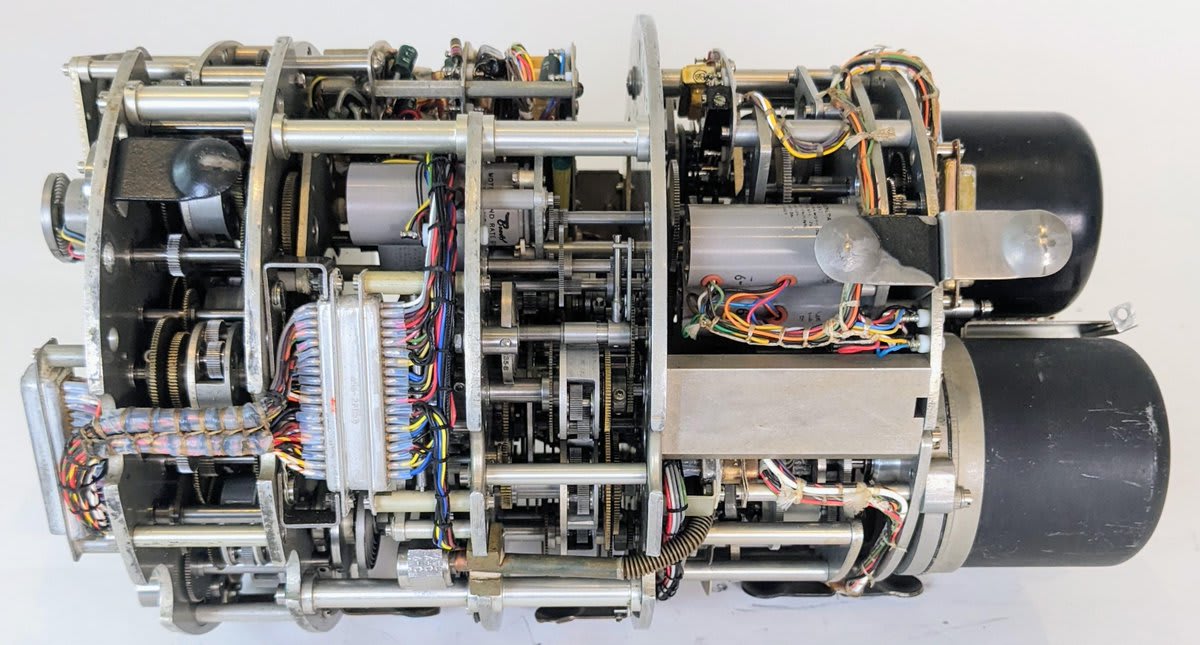
Quotes
In the late 1800s, some enterprises basically just didn’t measure their business or track any real metrics, except for balancing their books annually. (!) Carnegie, Rockefeller, and others started measuring and found all sorts of inefficiencies to improve (The Autobiography of Andrew Carnegie)
As I became acquainted with the manufacture of iron I was greatly surprised to find that the cost of each of the various processes was unknown. Inquiries made of the leading manufacturers of Pittsburgh proved this. It was a lump business, and until stock was taken and the books balanced at the end of the year, the manufacturers were in total ignorance of results. I heard of men who thought their business at the end of the year would show a loss and had found a profit, and vice-versa. I felt as if we were moles burrowing in the dark, and this to me was intolerable.
How much the structure of business changed starting in the mid-19th century (John Micklethwait and Adrian Wooldridge, The Company)
A firm structured like Sears, Roebuck in 1916, with thousands of employees, pensioners, and shareholders, did not exist in 1840—not even in the wild imaginings of some futuristic visionary. Back then, the bulk of economic activity was conducted through single-unit businesses, run and owned by independent traders, who would have been more familiar with the Merchant of Prato’s business methods than Henry Ford’s.
Electricity, literally a life-changing technology (Robert J. Gordon, The Rise and Fall of American Growth)
One Wyoming ranch woman called the day when electricity arrived “my Day of Days because lights shone where lights had never been, the electric stove radiated heat, the washer turned, and an electric pump freed me from hauling water. The old hand pump is buried under six feet of snow, let it stay there! Good bye Old Toilet on the Hill! With the advent of the REA, that old book that was my life is closed and Book II is begun.”
Lower transport costs → more competition → better for consumers. Better engines, faster vehicles, cheaper energy all contribute to this (Joel Mokyr, The Lever of Riches)
A world of high transport costs is described by an economic model of monopolistic competition. One of the characteristics of such a model is that innovator and laggard can coexist side by side. In the region served by the innovator, lower production costs due to technological change meant a combination of higher profits for producers and lower prices for consumers. Nothing could force the laggards to follow suit, however, and the “survival of the cheapest” model so beloved by economists is short-circuited.
More examples of predicted resource shortages that never appeared (Virginia Postrel, The Future and Its Enemies)
Theodore Roosevelt warned of an impending “timber famine,” driven by the railroads’ insatiable demand for wood. The problem was solved not by the technocratic Forest Service but by the development of creosote to preserve cross-ties and by the railroads’ own natural limits. The story repeated itself with metals in the 1970s and 1980s, as various authorities foresaw shortages or outright exhaustion. Instead, consumers bought fewer refrigerators and automobiles, and more services and electronic gadgets. More efficient techniques and substitute materials reduced the amount of metal needed to make everything from cars to telephone wire. And the predicted shortages never appeared.
The loss of optimism about progress in the 20th century began with the World Wars, the Great Depression, and the rise of totalitarianism around the world (Gabriel A. Almond, Progress and Its Discontents)
The first powerful shock came in 1914 when the “civilized” nations of Europe—most of them boasting the advances of science and technology, education, and self-government—went to war with one another and quickly brought even non-European nations into the vortex of a global conflict. The world had scarcely recovered from the conflagration when other traumas followed: the Russian Revolution, fought, like the French Revolution, in the name of heroic ideals but demanding from its inception to the present unconscionable human sacrifices; fascism in its Italian and in its generic form; the Great Depression; Nazism, reaching its climax of bestiality in the scientifically organized wartime extermination camps of the Third Reich; the carnage of the Second World War; the war’s aftermath of spreading dictatorship and new armed conflicts; and the aborted hopes for democracy and economic advance in the emergent Third World countries.
Verdi’s opera Aïda was commissioned for the opening of the Suez Canal, but was completed late (Jean Strouse, Morgan)
The French diplomat Ferdinand de Lesseps organized efforts to dig a canal across the Suez isthmus in 1859. Ten years later, a few months after the completion of America’s transcontinental railroad, Empress Eugenie sailed from Port Said to Suez for the formal opening of the canal. Among the other dignitaries who attended were the Prince and Princess of Wales, Emperor Franz Joseph, and an envoy from the Pope. Verdi, commissioned to write an opera for the event, failed to complete it in time: Aïda premiered in Cairo in 1871.
The United States in 1945 (via @CPopeHC)
We own 70 per cent of the world’s automobiles and trucks, 50 per cent of the world’s telephones. We listen to 45 per cent of the world’s radios. We operate 35 per cent of the world’s railroads. We consume 59 per cent of the world’s petrolum, and 50 per cent of its rubber.
Aesthetics
The pre-WW2 covers of Fortune (via @simonsarris)
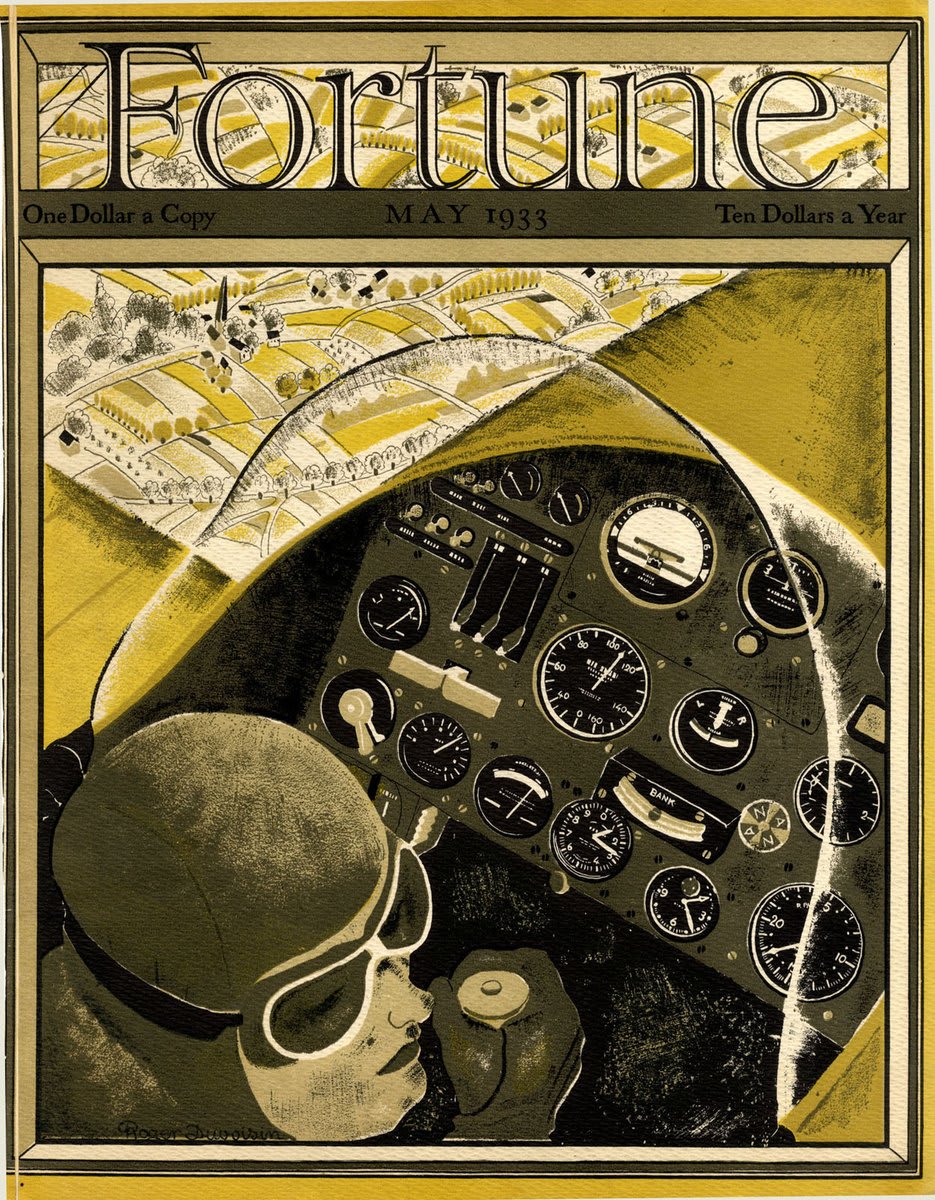
“Once, America found beauty in the blend of industry and nature—a train against the fiery dance at a steel mill. The smoke told tales of prosperity, each puff a testament to our relentless spirit. We embraced the aesthetic of ambition, and we were better for it” (@Itsjoeco)
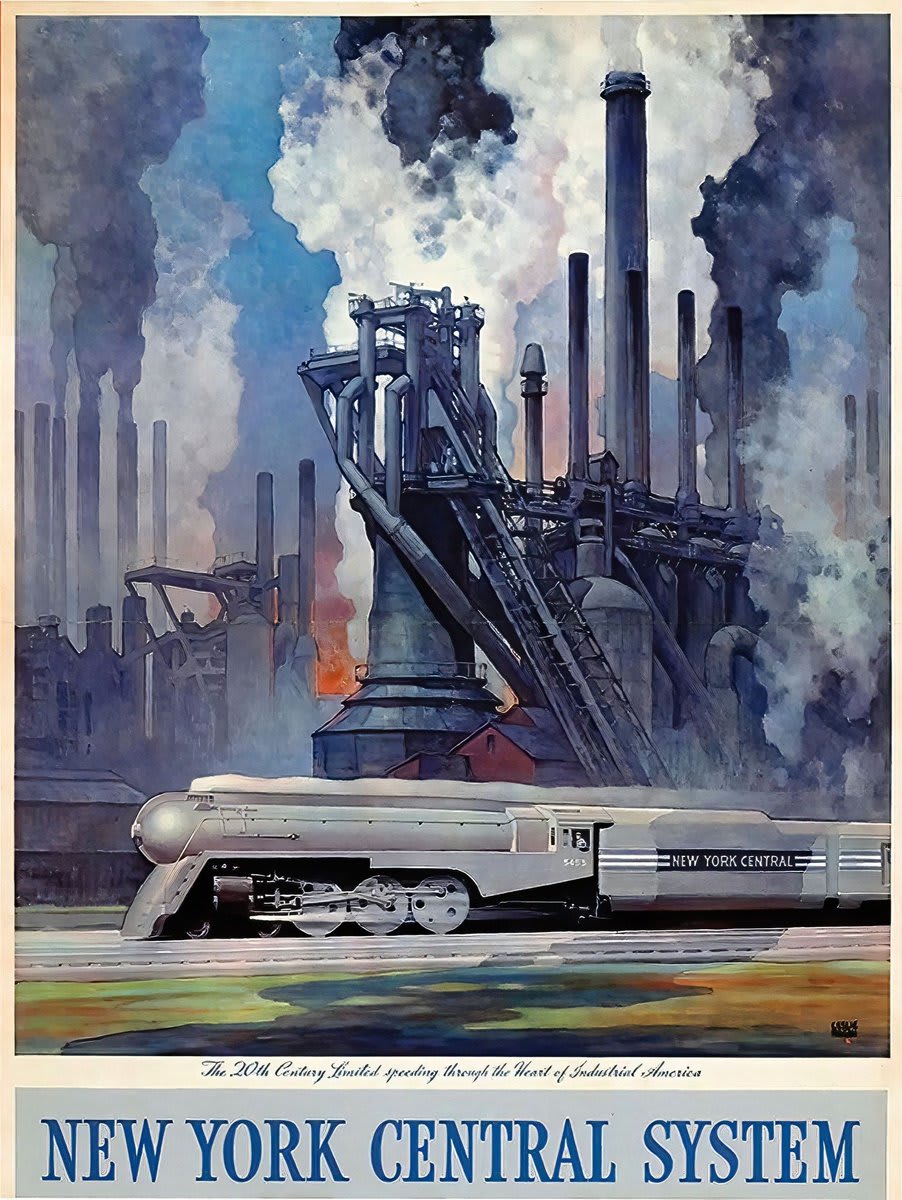
Charts
“What happened around the year 2000 that dramatically altered youth culture?” (@jayvanbavel)
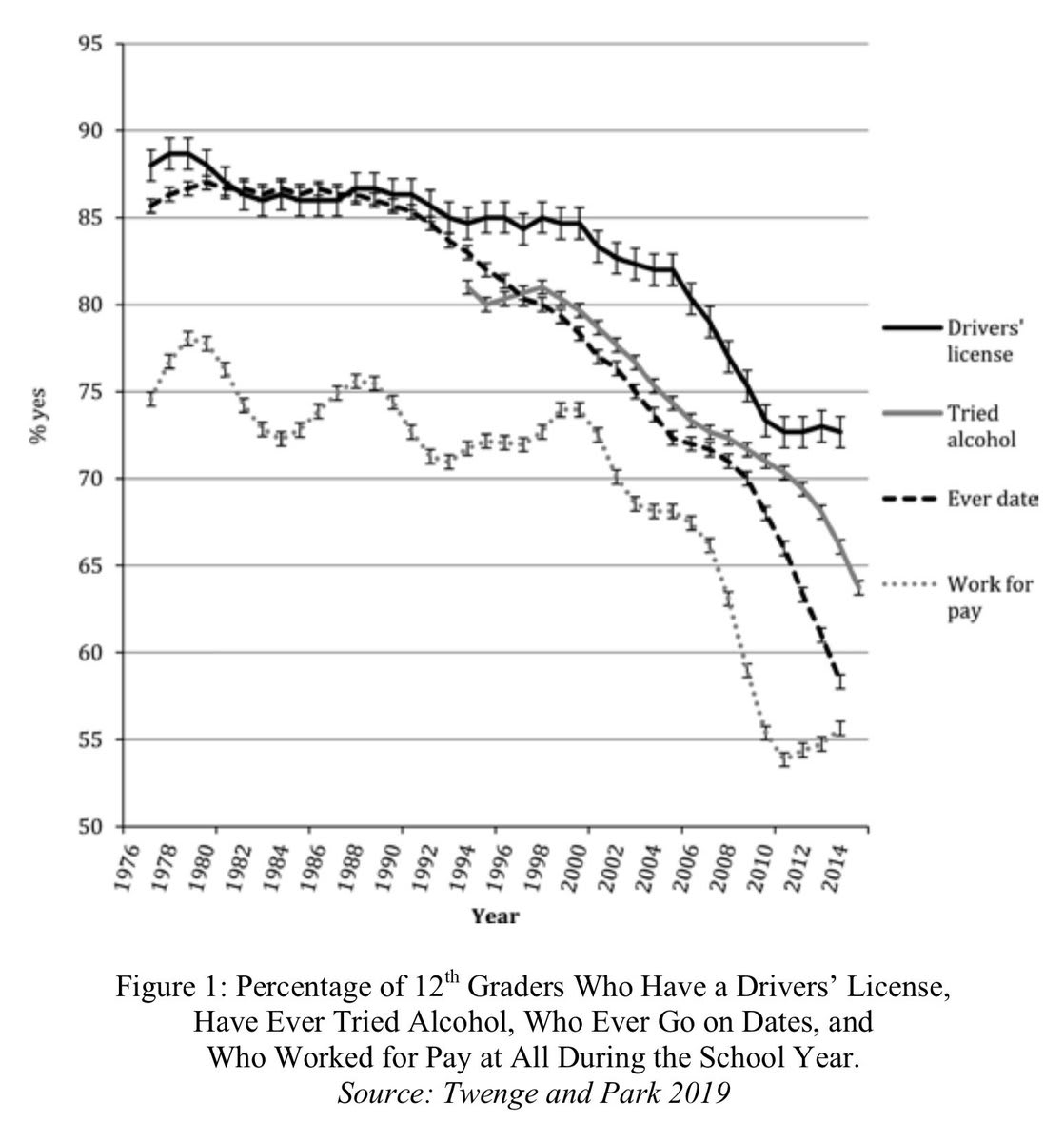
“Neither covid nor WW2 had any lasting effect on US GDP growth trends… our strong prior should be ‘unless this is literally more disruptive than WW2, things will revert to trend’” (@RichardMCNgo)
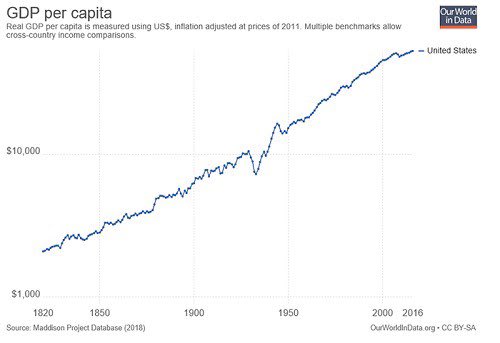
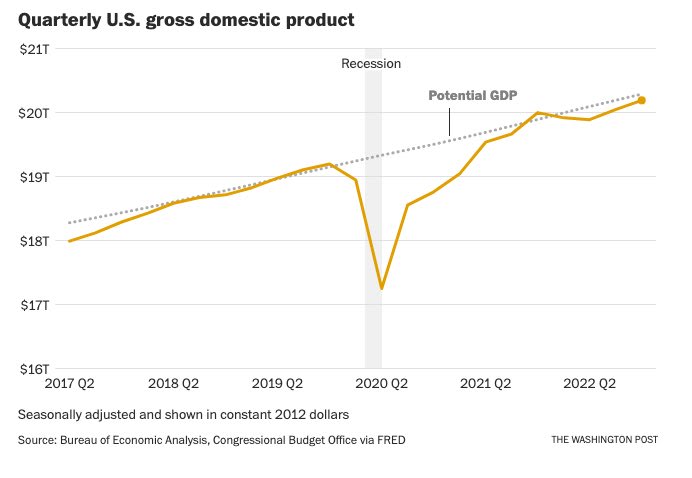
Everything, Everywhere, All On One Plot (via @AlexanderRKlotz)
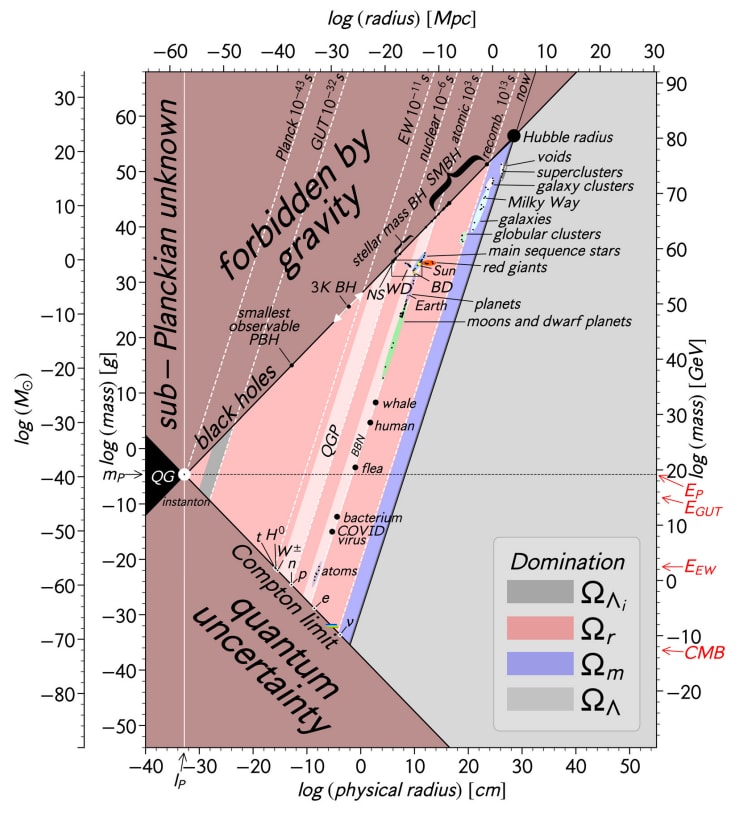
1 comments
Comments sorted by top scores.
comment by Templarrr (templarrr) · 2023-10-15T17:05:10.166Z · LW(p) · GW(p)
What happened around the year 2000 that dramatically altered youth culture
(half-serious) People found that if you start the Y axis not from zero - you can make the effect appear as big or as small as you want.
(more serious) Probably a combination of factors - scared after 9/11 society + improvements in personal electronic and internet meant there were simultaneously less desire, less societal push towards and less ways to do listed things.